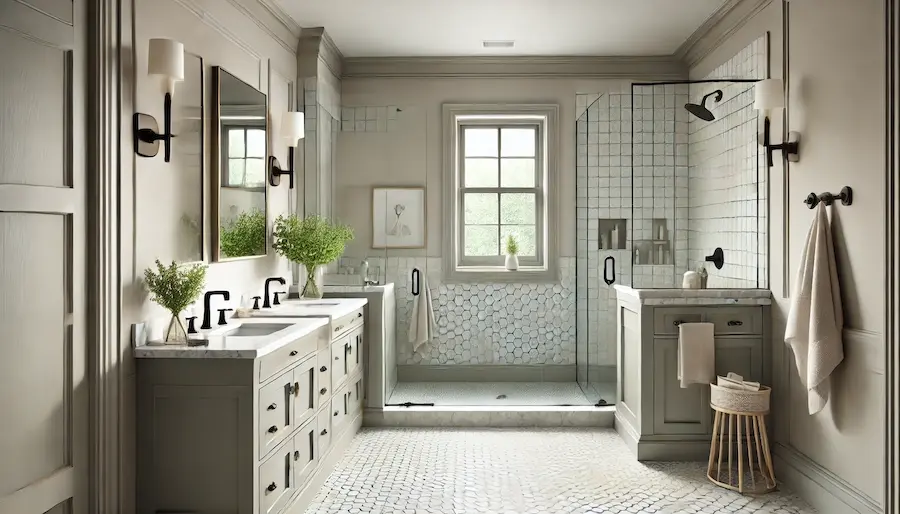Transitional bathrooms artfully blend traditional and contemporary design elements, creating spaces that are both timeless and current. This article explores the origins, key features, applications, and considerations for incorporating transitional elements into your bathroom.
Introduction to Transitional Bathrooms
A transitional bathroom harmonizes classic and modern aesthetics, offering a versatile design that appeals to diverse tastes. This style combines the warmth of traditional design with the clean lines of contemporary trends, resulting in a balanced and inviting space.
History and Origins of Transitional Bathrooms
The transitional design style emerged in the 1950s as a response to the stark modern and mid-century modern styles of the previous era. Homeowners sought to blend traditional and modern elements, creating spaces that were both comfortable and stylish.
Key Features of Transitional Bathrooms
Incorporating transitional elements can create a bathroom that is both functional and aesthetically pleasing:
- Neutral Color Palettes: Soft, neutral tones such as whites, grays, and beiges dominate, providing a serene backdrop that unifies traditional and modern components.
- Shaker-Style Vanities: These vanities offer a blend of classic craftsmanship and modern simplicity, often featuring clean lines and minimal ornamentation.
- Mixed Materials: Combining natural materials like wood and stone with contemporary elements such as glass and metal adds depth and interest.
- Streamlined Fixtures: Fixtures with clean lines and minimal detailing bridge the gap between traditional and modern styles.
- Balanced Aesthetics: The design avoids extremes, neither overly ornate nor excessively minimalistic, achieving a harmonious balance.
Applications of Transitional Bathrooms
Transitional bathroom designs can be adapted to various settings:
- Home Renovations: Ideal for updating older homes, transitional designs introduce modern amenities while preserving classic charm.
- New Constructions: Incorporating transitional elements in new builds offers broad appeal, attracting homeowners who appreciate both traditional and contemporary styles.
- Commercial Spaces: Hotels and restaurants often utilize transitional bathroom designs to create elegant, universally appealing restrooms.
Considerations When Choosing Transitional Bathroom Elements
When designing a transitional bathroom, consider the following:
- Cohesive Design: Ensure that traditional and modern elements complement each other to create a unified look.
- Quality Materials: Invest in high-quality materials that enhance both the aesthetic appeal and durability of the space.
- Functional Layout: Prioritize a layout that enhances usability while maintaining the design’s visual balance.
- Personal Touches: Incorporate accessories and decor that reflect your personal style, adding character to the space.
Conclusion
Transitional bathrooms offer a harmonious blend of traditional and contemporary design elements, resulting in spaces that are both elegant and functional. By understanding their origins and key features, you can create a bathroom that reflects your personal style while maintaining a timeless appeal.
